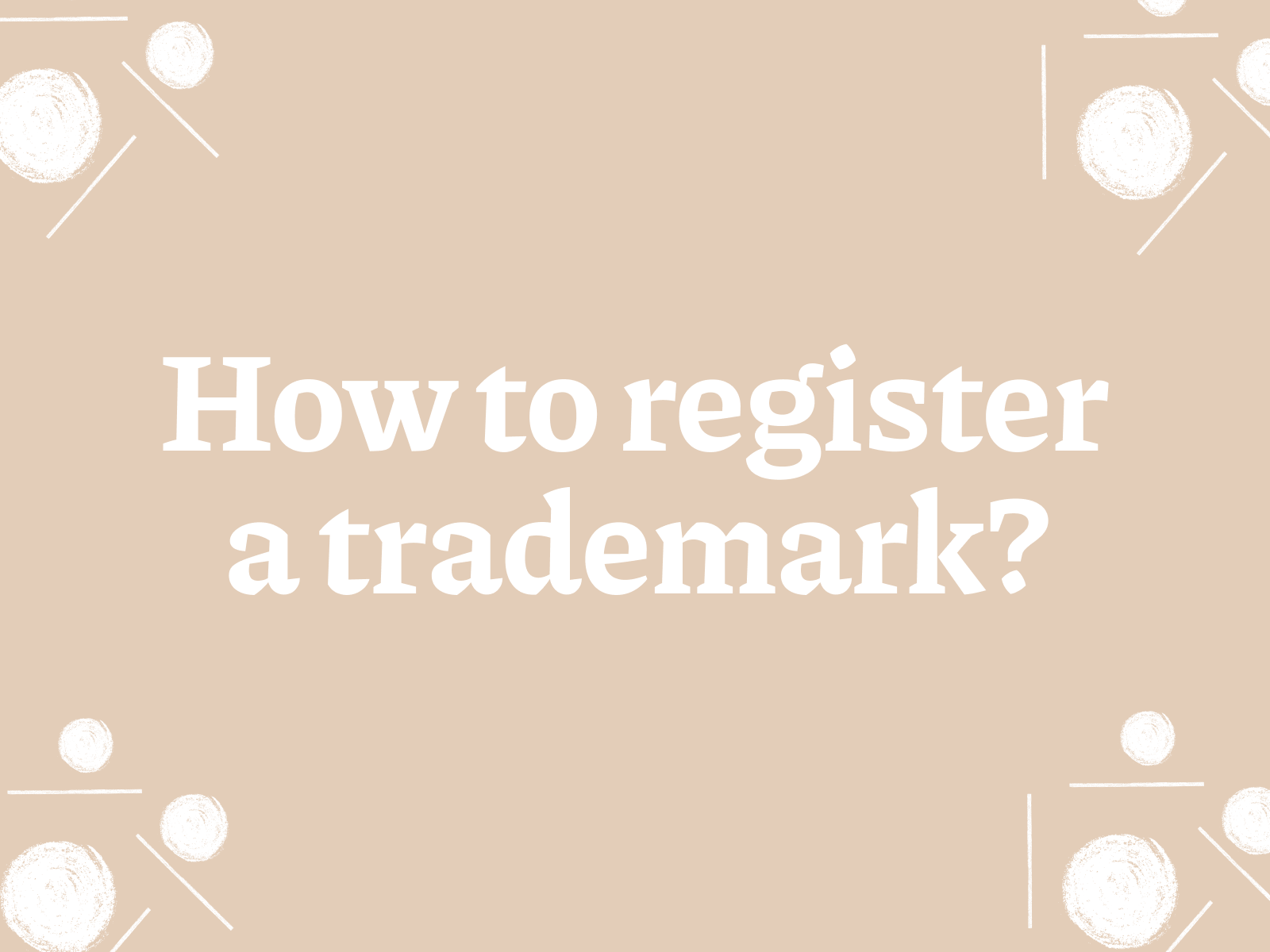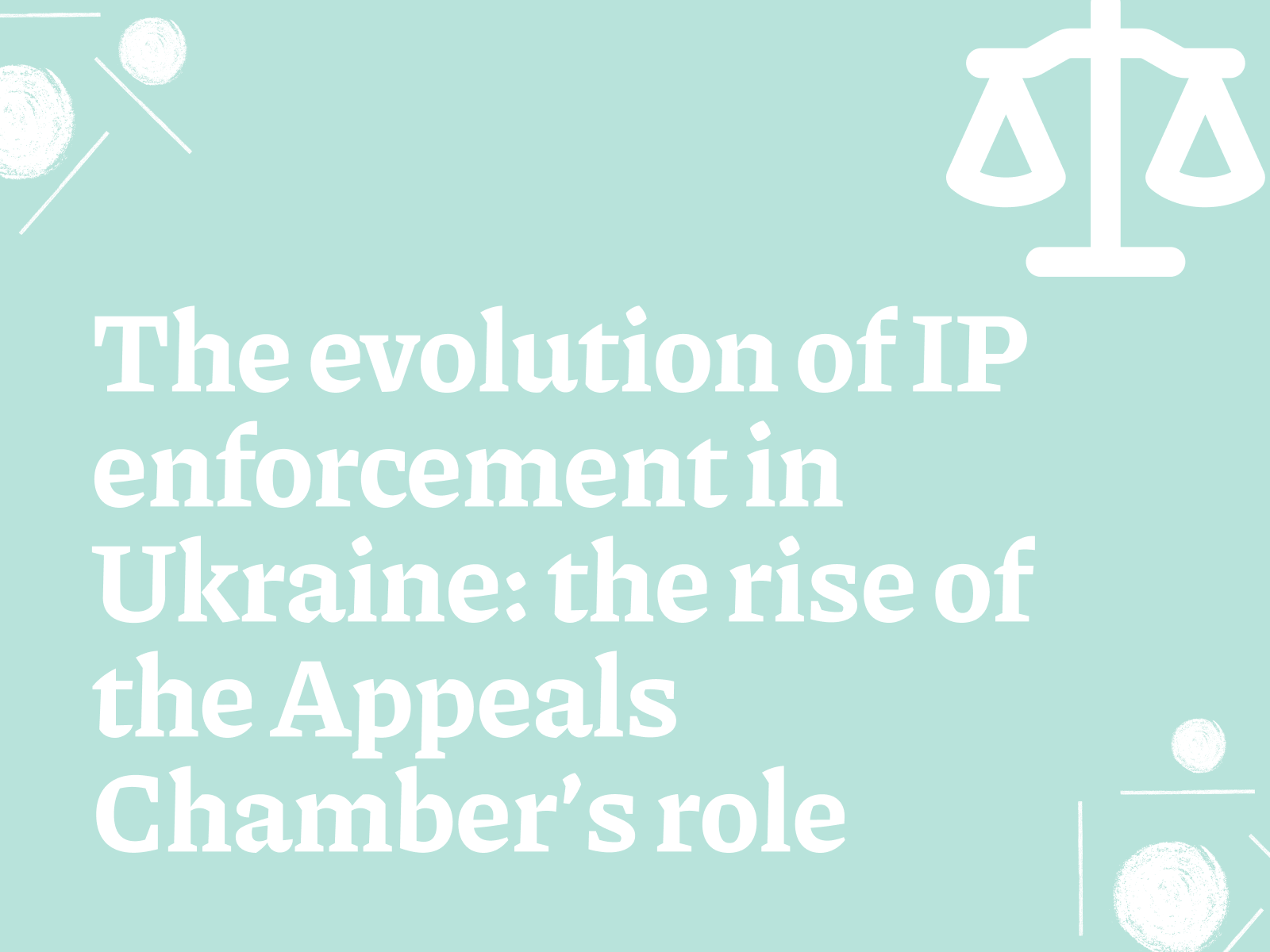In modern business, a trademark has become an important strategic objective for companies seeking to protect their unique identifiers and intellectual property in the territory of Ukraine. Registration of a trademark not only provides exclusive rights to use it but also serves as a powerful tool against unfair competition. In this context, it is extremely important to understand how to register a brand in Ukraine, features of the national legislative framework and documentation requirements.
The registration process may seem complicated, but with the right approach and strict adherence to instructions, it becomes a completely feasible task. In this article, we will provide a step-by-step guide to help you get a trademark in Ukraine, starting from preparing the necessary documents to successfully obtaining a trademark certificate.
Trademark registration process in Ukraine
Preparing for registration
Every entrepreneur faces the question: how to create your own brand? Before you begin the registration process, it is important to understand the trademark registration algorithm and to know, what is needed to register a trademark. The first step is to conduct a thorough search among already registered and submitted trademarks to ensure the uniqueness of your mark. This will eliminate the possibility of refusal due to similarity to existing trademarks.
Next, you should prepare a complete set of documents, which includes a description of the trademark, a list of goods and services that it will represent, as well as an application for registration. It is important to strictly follow the trademark registration algorithm to avoid possible errors and delays.
Application Submission
How to apply for trademark registration? – This is an important question. First of all, you need to decide where is a trademark registered?— An application for registration can be submitted through the official website of the Ukrainian Institute of Intellectual Property or directly to their office. It is important to provide all required information and attach the necessary documents, including evidence of the uniqueness of your mark.
During the registration process, special attention should be paid registration of a trademark name. These aspects are critical to the successful completion of the process.
Obtaining a certificate
After filing an application, the examination process begins, during which it is verified that your mark meets the established requirements and that there are no grounds for refusing registration. In case of successful completion of the examination, a trademark certificate, confirming your exclusive right to use the trademark.
Thus, patenting a brand and obtaining a trademark certificate in Ukraine is a task that requires careful preparation and strict adherence to the procedure. The right approach will ensure a successful completion of the process and protect your brand in the market.
International registration and legal assistance
International Registration
Brand owners interested in expanding their business beyond Ukraine may want to consider obtaining an international trademark. We always tell our clients that, as such, an international trademark does not exist and that a TM will have to be registered in each country separately. However, you can use the international trademark registration procedure to obtain protection in several countries at once. Patent a trademark in several countries begins with the submission of an international application through Ukrainian Institute of Intellectual Property, which acts as an intermediary between the applicant and the World Intellectual Property Organization (WIPO).
Legal support
During the process of registering a trademark, both nationally and internationally, various legal issues and difficulties may arise. In this case, help may come from specialists in the field of intellectual property. Legal services Polikarpov Law Firm and our legal assistance can prove invaluable in avoiding common mistakes and speeding up the registration process. Lawyers specializing in intellectual property, will provide consultations, help in preparing documents and represent your interests in Ukrainian Institute of Intellectual Property and international organizations.
In addition, professional assistance in trademark registration can significantly reduce the risks of refusal of registration due to non-compliance of the application with the requirements or due to violation of the rights of third parties. Experts will help you navigate the complexities of the legal system and provide support throughout every step of the registration process.
Completing the process and next steps
Registration of trademarks and brands
Having received a trademark certificate, an important step is its proper use in business operations. This includes product labelling, advertising and marketing, which helps strengthen your brand’s position in the market. Open a brand for widespread commercial use means actively promoting it among the target audience, increasing the level of brand awareness.
The next important aspect is the further expansion of the brand portfolio, which may include registration of trademarks in Ukraine for new products and services. It is also important to remember to keep your registration renewed in a timely manner to ensure that your intellectual property remains protected at all times.
Company name registration
In the context of strengthening the legal protection of your business, the question of how to register a company name in Ukraine as a trademark also deserves special attention. This process is no different from registering a trademark but is equally important to ensure that your business identity is fully protected.
Conclusions
In the process of business development in Ukraine, trademark registration is a key step to ensure the protection of your brand and unique trademarks. From understanding trademark registration algorithms before receiving trademark certificates, each stage requires a careful approach and strict adherence to established procedures. Whether registration of a company name in Ukraine or the aspiration to open a trademark in the international market, it is important to ensure comprehensive legal protection of your intellectual property.
The use of professional legal services and appeal for legal assistance can significantly facilitate this process, minimize risks and speed up the receipt of necessary documents. Thus, successful trademark registration not only protects your intellectual property but also serves as an important tool for strategic development and strengthening the position of your business in the market.
What are the main steps and requirements for successful trademark registration in my country?
First of all, you should choose a name for your brand that meets the basic requirements of trademark registration law.
In particular, your trade mark should not be descriptive, i.e., it should not directly indicate the goods or services that will be labelled with it. For example, if you produce honey, your trade mark should not be called “Honey”, as this directly indicates your product.
In addition, your trade mark should stand out from other names and logos for your type of business. When creating your trade mark, you should not use commonly used words, for example: mega, one, super, etc. Also, do not use words that are often used in your industry, as many businesses will also have the same names in their branding, so the consumer will not be able to distinguish your product or service from those of your competitors.
If you have seen a similar or even identical name in open sources, and such a business is engaged in the same activities as you, you should choose a different name.
In addition, your trade mark must not mislead consumers about the manufacturer of the product or about certain characteristics of your goods or services. In other words, if your trade mark is very similar to the names of other businesses in the relevant field, consumers may confuse you with your competitors and mistakenly believe that the goods or services are provided by others. In addition, you should not use adjectives in your name that indicate certain properties of the product or service if such properties are not true. For example, you should avoid using the words “eco” or “eco-friendly” unless you can provide evidence of the environmental friendliness of your products.
Particular attention should be paid to the use of the word “Ukraine” or the country code “UA” in your trade mark. As it will be extremely difficult to register such a trademark: firstly, you will need to prove the necessity of using such words and obtain permission from the relevant commission; secondly, you will need to pay an additional state fee for the use of such a word.
Secondly, in order to successfully register a trademark, you need to make sure that there are no very similar or identical trademarks registered or filed for registration for your type of business.
Thus, after choosing a name that you believe meets all the requirements, you need to search for such a trademark in the databases of trademarks filed for registration and registered.
If similar trademarks are found, you can consider registering your name together with a distinctive image or partially changing the name.
If an identical trademark is found, it is worth considering a complete change in your branding.
If the search results do not reveal similar/identical trademarks, you can submit your trademark for registration.
How to choose the right goods and services for trademark registration to ensure maximum protection?
An important step before registering a trade mark is to determine the activities for which you will use it. After all, a trademark is not registered for all types of goods or services, but only for certain types of goods or services, which are called “classes“. They may be somewhat similar to KVEDs for legal entities and individual entrepreneurs, and there are forty-five such classes in total (thirty-four classes of goods and eleven classes of services).
Each class includes a certain number of items of the same type of goods or services. For example, Class 25 is a class of goods that includes a variety of clothing and footwear, while Class 43 contains a list of hotel and restaurant services.
If you only sell goods from other manufacturers, then class 35, which covers trade services, will be enough for you.
If you provide services to others, you should consider registering in the service classes.
The number and scope of classes directly affects the scope of your trademark protection. That is, your trademark will be protected only in relation to a specific field of activity, which will be provided for in the list of class items.
For example, if you register a trademark for the production and sale of jewellery in class 14, your trademark will be protected only for such goods. Therefore, if another person registers the same trademark, but, for example, for legal services in class 45, you will not be able to oppose it. After all, your activities are completely different and consumers will not confuse such goods and services.
At the same time, registration in one class does not always allow other persons to register the same trademark in another class. Thus, there is such a thing as related goods or services.
Related goods or services are those that, although in different classes, are partially similar in nature. For example, class 03 includes non-medicinal cosmetics and non-medicinal drugs. In turn, class 05 covers, on the contrary, medicinal products and cosmetics. As you can see, medicinal and non-medicinal cosmetics are quite similar goods. Moreover, sometimes we can find these two types of goods in pharmacies or cosmetic stores. Therefore, consumers can easily confuse the manufacturers of such products in a pharmacy or store.
It is important to note that the number of classes not only affects the scope of your trademark protection, but also the state registration fees. The higher the number of classes, the higher the state fee.
At the same time, you can either select only some items from a class or indicate all goods or services of the same class during registration. However, it is worth remembering that you must use the trademark for all the goods and services you claim.
It is important not only not to select too many items, but also to remember to select all the goods or services you need. After registering a trademark, you will not be able to expand the list of classes or specify an additional class, and you will have to start the registration procedure from scratch. Therefore, we recommend that you determine in advance what activities you will use your trademark for with a 5-year perspective. This will save you time and resources.
What documents and information should be provided when applying for trademark registration?
To submit a trademark for registration, first of all, you need to provide:
- If the future owner will be an individual:
Surname, name, patronymic of the future owner of the trademark and the address of registration of such person (or the address according to the certificate of an internally displaced person or the location of the sole proprietorship).
If you work as a sole proprietor, you need to register the trademark in your name as an individual, since a sole proprietorship is just your economic status. If you register a trademark in the name of an individual, you will be able to use it as a sole proprietor. - If the future owner is a legal entity:
Full name, identification code (EDRPOU code), registered location. - Your brand image in high quality.
- A list of classes of goods or services for which you want to register your trademark.
- You can also add a description of your trademark when filing. Such a description is not required. However, if, for example, your trade mark contains a verbal element that is difficult to read or has a specific meaning, you may wish to explain this in the description. In the description, you can simply indicate which elements or colour schemes your trade mark consists of.
- If the application is submitted by a representative, a power of attorney for the representative must be attached and the representative’s details must be indicated in the application.
- Within two months from the filing date, the state fee for filing a trademark for registration must be paid and the relevant receipt attached to the application materials.
- If you have a proof of priority (participation in the exhibition or a pre-application), such documents must also be submitted to the registration authority.
What are the main stages of the trademark registration process, and how long can it take?
The trademark registration process can be divided into the following main stages
- Registration of primary documents, preliminary examination and data entry into the database.
- Set the date of submission.
- Formal examination.
- Qualification examination.
- Preparation for state registration and publication.
- The trademark has been registered.
After submitting your application, the relevant documents are registered and your application appears in the database. After that, the application date is set.
After paying the state application fee and having it credited, your application will move to the stage of formal examination.
The duration of this stage, as well as the overall trademark registration process, directly depends on the workload of the registration authority. Currently, the average duration of a formal examination is 12 months.
After successful completion of the formal examination, the application moves to the qualification examination stage. This stage is shorter than the previous one.
At this stage, the expert checks your trademark for compliance with the legal requirements. In particular, they check whether your trademark is misleading, descriptive or of low distinctiveness.
In addition, the expert searches for similar and identical trademarks to yours.
Based on the results of such an examination, the examiner may decide to register your trademark or send a notice of preliminary refusal to register. Such a preliminary refusal indicates that your trademark does not meet certain legal requirements. However, such a refusal is not final and can be overcome by providing a reasoned response.
After reviewing your answer, the expert may decide to register or refuse registration.
After a positive decision on registration, your trademark is prepared for state registration and publication in the relevant register. At this stage, you need to pay the state registration fee and the fee for issuing the certificate.
Upon completion of this stage, your trademark is considered registered and you will be issued a certificate of registration.
What problems or restrictions can be encountered when registering a trademark, and how can they be avoided or resolved?
The main problems and restrictions in the course of trademark registration may relate to the trademark’s non-compliance with the terms of the law and the receipt of a preliminary or final refusal to register such a trademark from the office.
A preliminary check of your trademark for similar and identical trademarks, as well as an analysis of your trademark for compliance with the requirements of the law, will help to avoid these problems.
Your trade mark should not be descriptive, i.e., it should not directly indicate the goods or services that will be labelled with it. For example, if you produce honey, your trade mark should not be called “Honey”, as this directly indicates your product.
In addition, your trade mark should stand out from other names and logos for your type of business. When creating your trade mark, you should not use commonly used words, e.g: mega, one, super, etc. Also, do not use words that are often used in your industry, as many businesses will also have similar names in their branding, so the consumer will not be able to distinguish your product or service from those of your competitors.
If you have seen a similar or even identical name in open sources, and such a business is engaged in the same activities as you, you should choose a different name.
In addition, your trade mark must not mislead consumers about the manufacturer of the product or about certain characteristics of your goods or services. In other words, if your trade mark is very similar to the names of other businesses in the relevant field, consumers may confuse you with your competitors and mistakenly believe that the goods or services are provided by others. In addition, you should not use adjectives in your name that indicate certain properties of the product or service if such properties are not true. For example, you should avoid using the words “eco” or “eco-friendly” unless you can provide evidence of the environmental friendliness of your products.
If similar trademarks are found, you may consider registering your name together with a distinctive image or partially changing the name.
If an identical trademark is found, it is worth considering a complete change in your branding.
You can overcome a preliminary refusal based on these grounds by preparing a reasoned response to such a refusal, where you will need to justify why your trademark is not similar to the opposed ones and complies with the requirements of the law.
If you have received a final refusal to register, you can also appeal against it to the Appeals Chamber of the registration authority.
In addition to receiving a refusal to register, at the stage of formal examination, you may receive a claim or objection to registration from interested parties. It is impossible to be absolutely sure that you will not receive such an objection, but a preliminary search can help you understand the chances of receiving an objection.
If you receive an objection to registration from other persons, you can formulate a response to such an objection with arguments for your position. However, the examiner may or may not take your response into account and issue a preliminary refusal to register, which you will have to overcome.






